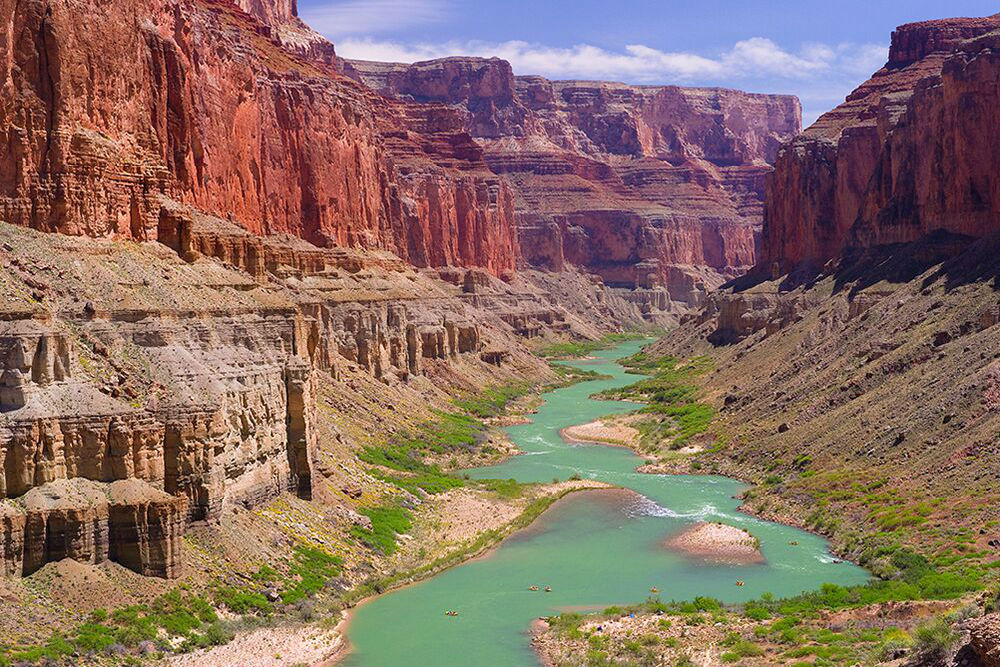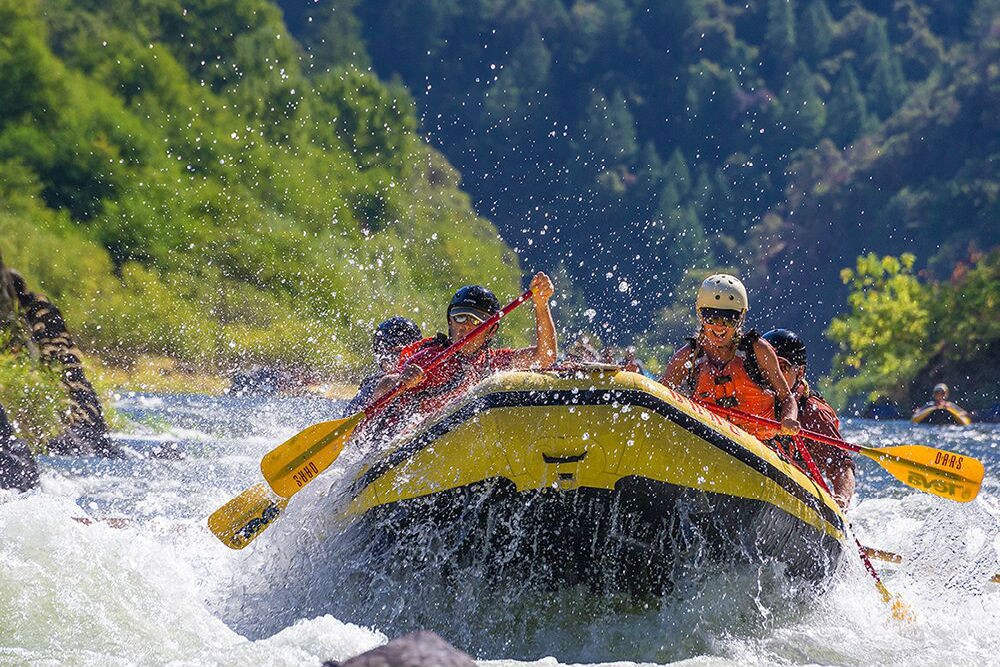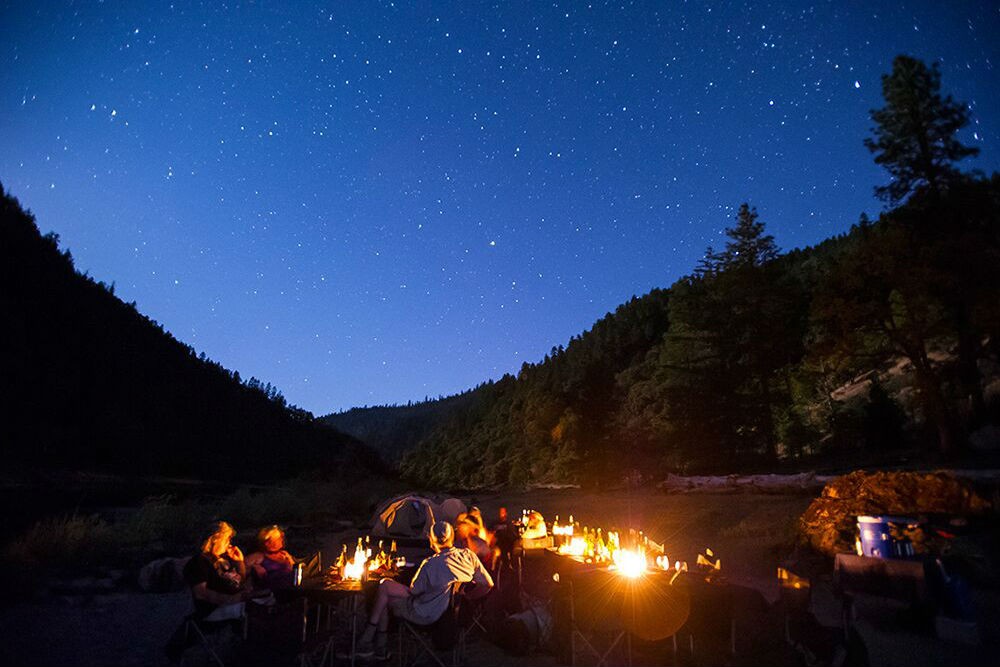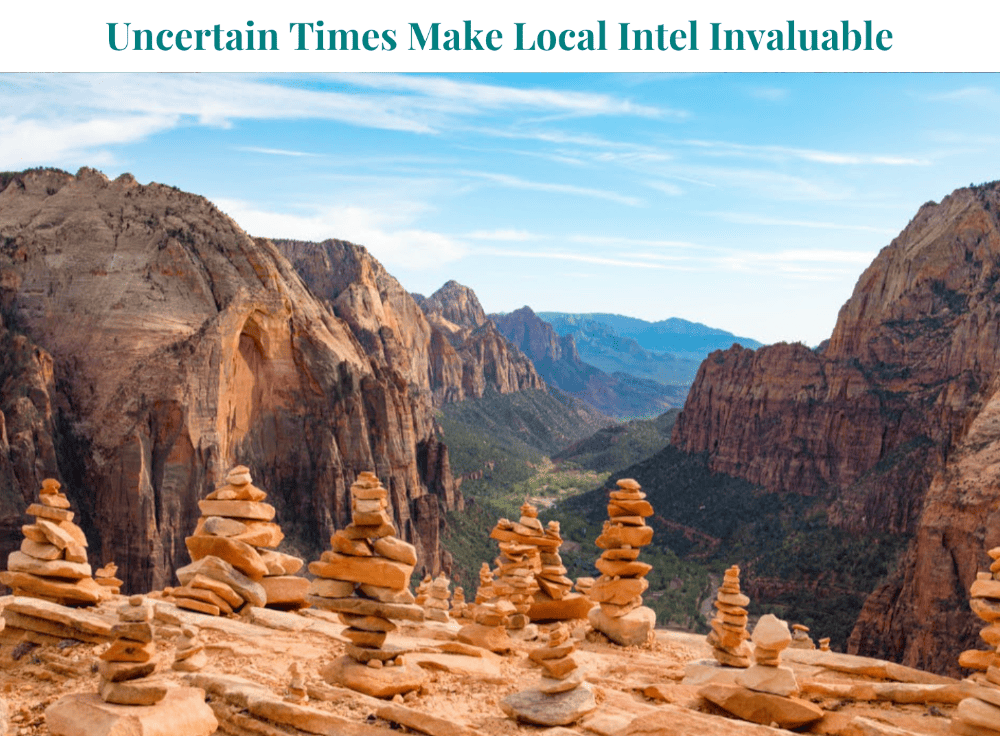Insider’s Guide to River Rafting in the American West
 The Colorado River flowing through the Grand Canyon. Photo courtesy O.A.R.S.
The Colorado River flowing through the Grand Canyon. Photo courtesy O.A.R.S.
In some cases, Wendy has several trip-planning specialists she recommends for a destination and would like to connect with you directly to determine who would best meet your needs. This is one of those cases. Please click on the CONTACT button (below) to find out from Wendy which travel expert is best for your specific trip goals and challenges.


Choosing the right river is the first step to planning a great rafting adventure. Photo courtesy O.A.R.S.
Choosing the Right River
Most overlooked
To many people, Idaho means potatoes and a long, boring stretch of Interstate 84. Of all the Rocky Mountain states, it may well have the least cachet. But it’s home to numerous national monuments, historic sites, reserves, wildlife refuges, recreation and conservation areas, and state parks—not to mention the Frank Church–River of No Return Wilderness Area, the second-largest protected wilderness in the lower 48. Here you’ll find lots of great whitewater, including on the Salmon River.
The Yampa River is the last undammed tributary of the Colorado River system. Located in Dinosaur National Monument, it’s a little-known gem in the park service crown: sandy beaches, side hikes to vistas that rival the Grand Canyon, and well-preserved prehistoric Native American sites, all encased in a striking river corridor whose tall, vertical walls are streaked with jet-black coloration known as “desert varnish.”
Most overrated
Should the Grand Canyon be on your bucket list? Absolutely! Is it the best trip for your family? Not necessarily. Grand Canyon trips don’t usually offer an option to paddle yourself, and mid-summer temperatures can be well over 100 degrees. Rafters who want to be active in paddle rafts or inflatable kayaks, and who want to swim in water above 55 degrees, should consider rivers elsewhere—in Idaho or Oregon, for instance. The glories of the Grand Canyon can’t be understated, but make sure your expectations are aligned with the experience you’ll find there.
Best river for thrill seekers and experienced rafters
The Tuolumne River is one of the few real wilderness rafting trips in California and it is a rare “Wild & Scenic River” (a federal designation that grants the river certain protections). In the spring, the canyon walls are covered with brilliant orange poppies and purple lupine. Arguably the best whitewater trip in the state, the “T” delivers constant action, including the infamous Class IV+* Clavey Falls. Early season, high-water trips challenge the most experienced rafter, and in summer a side-hike up the Clavey River to its hidden swimming holes is a great way to beat the heat.
More experienced rafters should not spend too much time worrying that a certain river won’t be challenging enough. A multi-day wilderness rafting trip is more than the whitewater alone. The natural beauty of the great outdoors, a day (or week) with so few obligations or distractions, your fellow travelers and guides (and of course the excitement of the rapids), all combine to create your own unique river experience. Let it surprise you.
Best river for beginners
Oregon’s Wild & Scenic Rogue River offers a perfect introduction to multi-day river running. The Rogue offers lush greenery, warm, clear water (70 degrees is balmy by river standards) and hidden waterfalls. With mostly gentle rapids—plus a few to command respect and get your heart rate up—three- to five-day trips down the Rogue are a great option for first-timers.
Best river for families
While the stretch of the Green River that cuts through Desolation Canyon can be recommended to just about anyone, it’s a great choice for families and children. “Deso” lays claim to more than 50 splashy Class II-III* rapids in its 84 miles, and offers picture-perfect campsites with sandy nooks shaded by cottonwoods. Hikes of varying lengths lead to an abandoned ranch full of artifacts from bygone days, well-preserved pictograph panels of the Fremont culture, and one of Butch Cassidy’s hideouts (allegedly). Mosquitoes can be pretty pesky in the upper canyon during the early season, but many outfitters motor through this section on the first day.
*River Classification System:
Class I: Easy
Class II: Novice
Class III: Beginner – Intermediate
Class IV: Advanced
Class V: Expert
Class VI: Extreme (not run commercially)
Best Times to Go
The rafting season in the American West generally runs from April through October; the best time to go varies by river and priorities. Looking for high water and maximum adventure? Mid-May to early June. Shorts and T-shirts? Starting in July. Families with children who want to spend time in the water should consider mid-July to August. And those who prefer trips without the little ones should look for adult-only departures or trips when school is in session. The spring and fall in the American West are great too because of the weather, the abundant flora, and minimal crowds.
Worst Time to Go
On day trips, weekends tend to be more crowded. If you’re an avid hiker planning a trip on a desert river, avoid the heat of July and August.
Biggest Rookie Mistakes
Bringing too much stuff. On the river, simplicity is bliss, and you don’t need that much anyway. Folks won’t care if you wear the same T-shirt days in a row; in fact, they probably won’t even notice. Keep in mind that you’re schlepping your bags from the rafts to your campsite every afternoon and back the next morning. Follow the packing list provided, adjust for the weather, and don’t be tempted to add extra items “just in case.”
Not drinking enough water. It’s not uncommon for participants to arrive at the meeting place short on sleep and stressed from travel. Combine this with active days on the water and often sunny conditions, and dehydration is quick to set in. Your guides will constantly remind you: hydrate, hydrate, hydrate!
Cheap Thrill
Even if you’re not a morning person, getting up early on the river delivers a big payoff. The dawn light on the water and surrounding canyon, and the quiet that allows you to hear the river as it ripples and the birds as they wake, compose some of the most peaceful and inspiring moments you’ll experience. Conversely, while it’s inconvenient to make the short trek to the loo in the middle of the night, never miss the opportunity to take a moment and watch the night sky before diving back into your tent. You may never have seen so many stars at once, nor glimpsed the Milky Way so clearly.
The Souvenir
The best outfitters practice the Leave No Trace outdoor ethic: “Take only photographs and leave only footprints.” Pictures and memories are the best souvenirs of your trip.
Don’t Forget to Pack
Comfy clothes for camp: jeans, a dress, sweats or baggy shorts—whatever makes you feel comfortable (appropriate to the season, of course). You’ll also want a pair of dry shoes or sandals, so as not to go barefoot and risk injuring your feet on a buried rock or sharp stick.
Tipping Tip
On a multi-day trip, guides don’t go home at the end of the day. They cook your meals, maneuver your rafts, lead your hikes, and generally facilitate your entire experience. Plan for a gratuity of 5 to 10 percent of the trip cost, given in cash so that it can be split among the crew before they head on to their next assignment.
The Powder Room
It’s a question everyone who hasn’t been on a river trip wants to know, but is too embarrassed to ask. While a few rivers offer access to outhouses, most require a portable toilet. There are several different systems, but the idea is the same: a receptacle with a toilet seat but without plumbing that is set up as soon as you arrive at camp and is the last thing taken down before you leave. The “unit,” as it’s known, is placed in a private area near camp, with a protocol in place to keep it private. The trail is usually marked with a hand-wash station, and the actual location in most cases is open air. The first priority? A good view!








